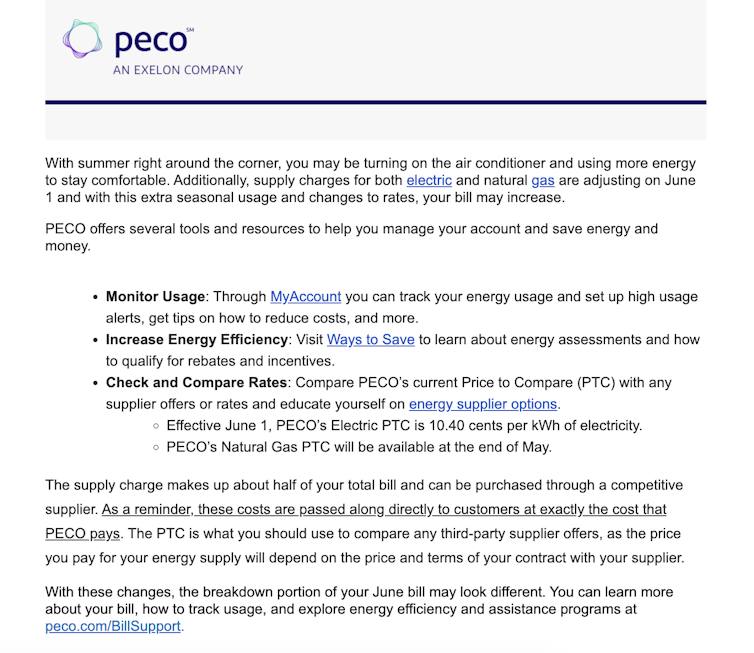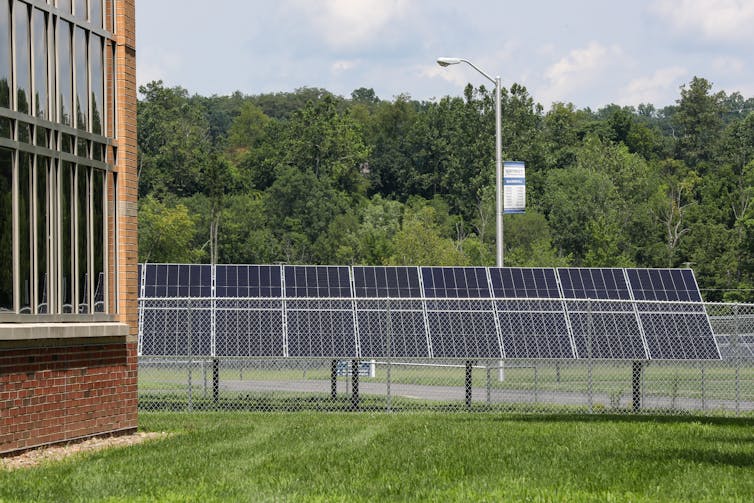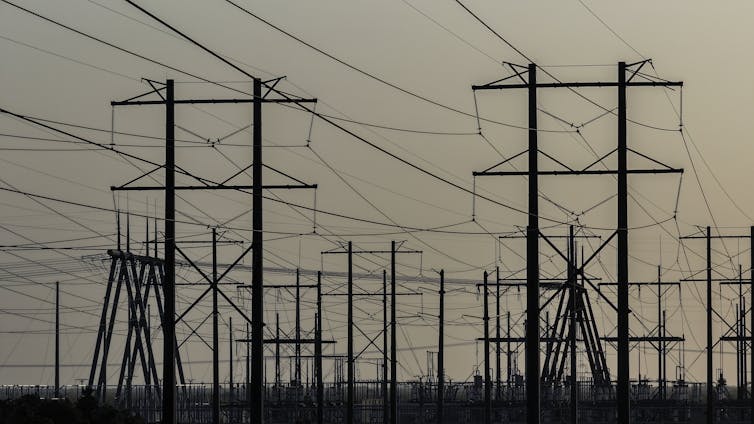High electricity prices zapping your budget? Here are 5 ways to save
Electricity rates are soaring in Pennsylvania and other parts of the country. 2 energy experts offer tips to lower your monthly bill.
Pennsylvania residents may get sticker shock when they see their electric bills this summer. Aging infrastructure, extreme weather, transmission bottlenecks and increased demand are sending electricity rates soaring.
Widespread rate hikes across the commonwealth started in December 2024 and are continuing in 2025. Rising prices are related to how the wholesale electricity market in Pennsylvania operates, among other factors. Utilities are paying much more than in previous years to ensure they can meet their customers’ future demand, and these costs are being passed on to consumers.
For example, Philadelphia residents were among those hit with a 10% rate increase that went into effect in January 2025 for all residential customers of PECO, Pennsylvania’s largest electric and gas utility. Some of PECO’s residential customers will see an additional 12.5% rate increase kick in on June 1, 2025.

As Penn State University professors who research energy law and electricity markets, we want to suggest five ways Pennsylvania consumers can lower their electric bills amid price hikes.
1. Use less
Much like when gasoline prices rise, the best response for individual consumers when electric rates go up is often to use less electricity.
The largest efficiency improvements typically involve weatherizing a home – for example, adding insulation or sealing drafty windows and doors. Installing energy-efficient appliances such as heat pumps or changing your thermostat setting a few degrees can also save money.
Weatherization has an added benefit: improved health. In addition to maintaining a more comfortable indoor temperature, weatherizing paired with ventilation improvements can improve indoor air quality and control indoor moisture and mold.
Making a home more energy efficient can be tricky for low-income people, who might not be able to afford the costs, and renters, who don’t own the premises. However, Pennsylvania offers several programs to help residents make energy efficiency improvements, and organizations such as the Philadelphia Energy Authority try to reach low-income households.
Through the state’s low income usage reduction program, eligible tenants can receive help installing energy-saving features with written permission from their landlord. The multifamily weatherization assistance program has also provided grants for weatherization measures such as insulation and “air sealing to reduce infiltration” in buildings with five or more units that meet income criteria for residents.

2. Shop around – but buyer beware
Pennsylvania has what is called “retail electricity choice,” which means residents can pick who generates their electricity. For example, consumers can shop around for different rates charged per kilowatt-hour of electricity they consume or for electricity produced from wind and solar power.
But electricity customers cannot choose who carries that electricity to their residences. That is done by a regulated electric distribution company, or utility, with a monopoly on service.
Consumers can sometimes reduce their bills by choosing a cheaper offer for generation. But retail choice can be risky if consumers do not carefully read the conditions of the contract.
For example, some plans charge a higher rate than the default rate from the distribution company. Others charge different rates depending on whether the electricity is consumed during peak or off-peak hours. And still others lock customers into long contracts at a fixed price. This becomes undesirable if the default electricity rate drops lower than the contracted rate.
3. Try solar
For those who own their home, installing rooftop solar panels is another way to avoid higher electric bills.
The cost of solar panels has fallen steadily for many years, and rising electric rates make the economics of solar better.

Pennsylvania also has fairly advantageous rules for “net metering, which allows solar homeowners to get credits from the utility for excess solar power fed back into the grid.
For example, say a customer uses 1,000 kilowatt-hours of electricity in a month and their rooftop solar panels generate 1,200 kilowatt-hours. They won’t have to pay for the 1,000 kilowatt-hours they used, and those additional 200 kilowatt-hours will be credited on their next monthly electric bill.
Additionally, a number of federal and state tax incentives are available for rooftop solar energy in Pennsylvania. These incentives offset some of the up-front costs of installing solar panels.
Buying solar panels is a high up-front expense, however, even with tax credits. Programs such as Solarize Greater Philadelphia can help reduce the cost. But keep in mind that not all properties have roofs that are large, strong or sunny enough to benefit from solar.
For homeowners with suitable roofs, third-party solar is another option. This is when a company installs and continues owning the solar panels and charges the customer a fixed rate for the electricity produced by the solar panels. This rate is typically cheaper than the rate offered by the utility. But as with any contract, consumers need to read the fine print carefully and understand the long-term obligation.
4. Go to a public hearing
Local electric utilities are regulated by the Pennsylvania Public Utility Commission. Pennsylvania residents can file formal complaints with the PUC about rate hikes, or they can attend one of PUC’s public input hearings.
At these hearings, consumers can voice their concerns or argue against certain utility expenditures, such as lobbying expenses that utilities sometimes recoup through charges to customers.
Consumers might want to pay particular attention to the commission’s proceedings as it considers new electric rates and regulation for data centers and other large-load customers. These rates will determine which costs are shouldered by the data center operators and which costs wind up on the electric bills of all Pennsylvanians.
Consumers can file comments to advocate for a rate-sharing plan they believe will be fair.
5. Think holistically
As Americans continue to digitize their lives, electricity demand – and therefore prices – will likely continue to rise.

Given that growing electricity demand contributes to higher future rates, consumers may want to think about the energy-intensive online applications they use, such as data storage and all the AI features that tech companies are integrating into their products.
Consumers might also want to consider the types of energy they want produced in their neighborhood. Many people understandably oppose constructing new energy facilities in their communities due to the aesthetic impacts, use of land and in some cases pollution. But this opposition can also slow the construction of new energy generation.
Better processes for community involvement can enable the construction of generation with fewer negative impacts. These processes include, among other things, more detailed developer-community discussions and more comprehensive and thoughtful community benefits agreements. These agreements allow communities to negotiate services and resources that the energy developer will provide them. Such offerings might include vocational training programs, financial or other donations, or commitments to hire local labor.
Read more of our stories about Philadelphia and Pennsylvania.
Hannah Wiseman receives or has recently received funding from the Alfred P. Sloan Foundation, Arnold Ventures, U.S. National Science Foundation, U.S. Department of Energy, Center for Rural Pennsylvania, and the Pennsylvania Department of Environmental Protection. She is a member of the Center for Progressive Reform.
Seth Blumsack receives or has recently received funding from the Alfred P. Sloan Foundation, Heising Simons Foundation, U.S. National Science Foundation, U.S. Department of Energy, NASA, U.S. Federal Aviation Administration, Center for Rural Pennsylvania and the Pennsylvania Department of Environmental Protection.
Read These Next
From FIFA to the LA Clippers, carbon offset scandals are exposing the gap between sports teams’ gree
There are better ways for teams to cut their climate impact.
From early cars to generative AI, new technologies create demand for specialized materials
The mass adoption of new technologies drives demand for rare and complex materials used in their manufacture.
Doulas play essential roles in reproductive health care – and more states are beginning to recognize
Doulas bring a holistic, person-centered approach that can improve birth outcomes and lower overall…





